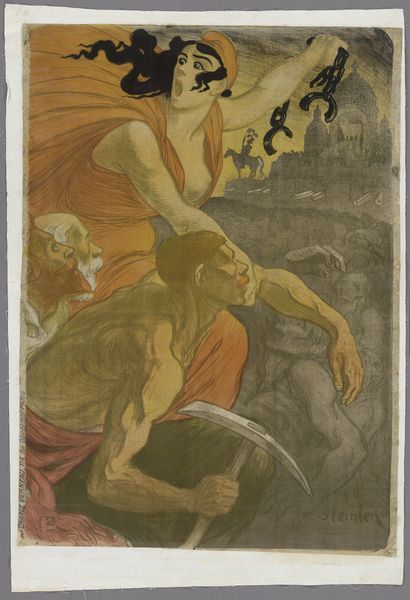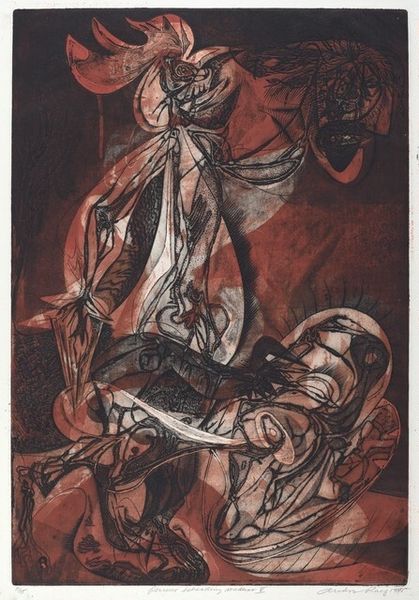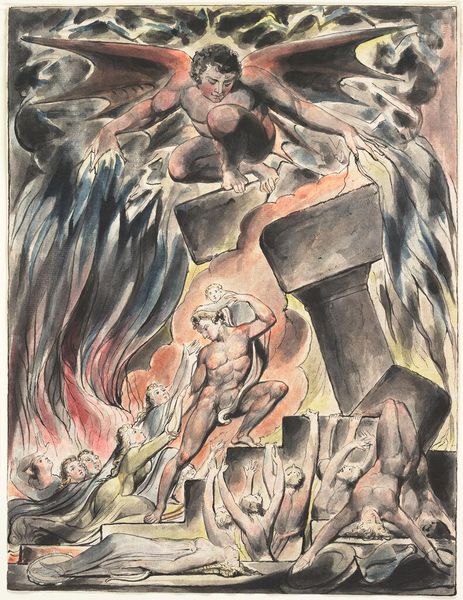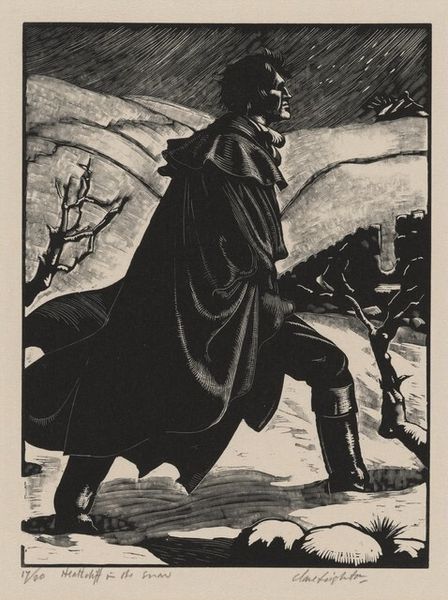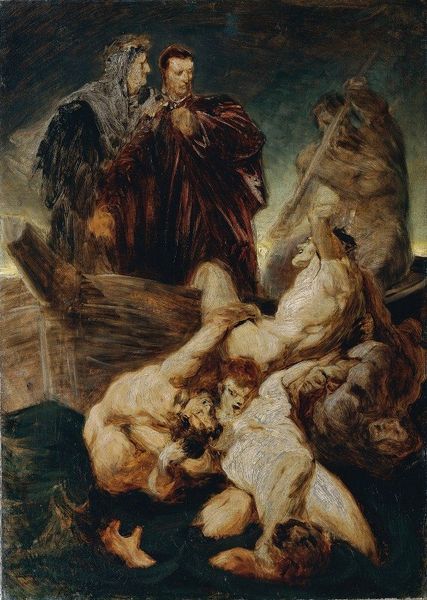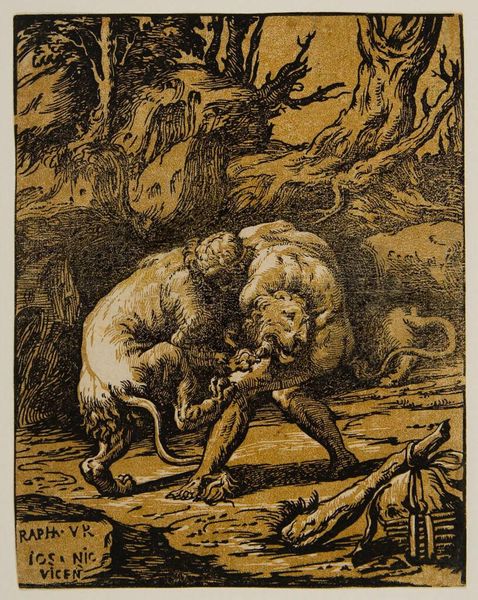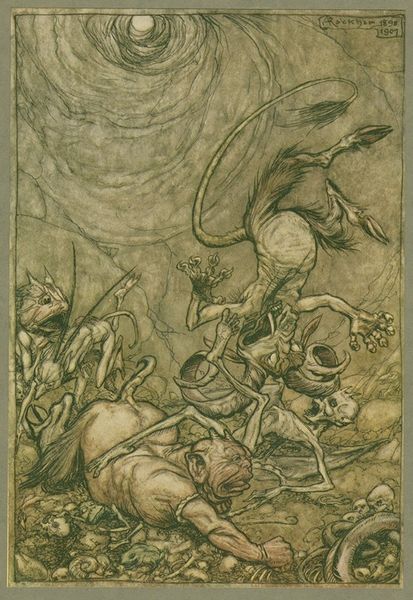
lithograph, print
#
art-nouveau
#
narrative-art
#
lithograph
# print
#
figuration
#
social-realism
#
symbolism
#
cityscape
#
history-painting
Copyright: Public Domain: Artvee
Curator: Here we have Théophile Alexandre Steinlen’s lithograph, “Le Petit Sou, journal de défense sociale,” created in 1900. Editor: My immediate reaction is…anguish. There’s a visceral, raw intensity to the figures, a sense of uprising painted with very bold colors. The red is powerful and demanding, suggesting the collective will of a people. Curator: Indeed. Steinlen was deeply involved in the social and political issues of his time, and this print exemplifies that. "Le Petit Sou" translates to "The Small Change," and the artwork was a poster for a socialist publication focused on defending social rights. Consider the period of its creation, around the turn of the century, with its rapid industrialization, widening social disparities, and rising class consciousness. Editor: It’s clearly a rallying cry, using art as direct action. I’m struck by the central female figure –she reminds me of Delacroix’s Liberty, but less idealized, more directly engaged with the pain of the figures below. What's the significance of her breaking chains? Is that really La Grande Nation there? Curator: Absolutely. Her raised fist with broken chains represents liberation from oppression, the overturning of the ruling elite. The figures beneath are those that suffer: a white elder with a beard symbolizing wisdom suppressed by poverty, next to a worker rising from the gray mass below, and armed with a miner's pickaxe.. Notice how they emerge from this landscape littered with bones and devastation, dominated in the background by what seems to be a smoking city overlooked by distant, unreachable opulence. Editor: So the church in the background and that solitary horse rider implies a criticism of established order and wealth. What's telling for me is the artist showing people together with different origins, united under common values. It makes one reflect upon today's conversations concerning commonality and equality, despite our various cultural roots. Curator: That is definitely a powerful component of this visual argument and shows how Steinlen engaged in the debates of his time, critiquing and challenging the systems. His social realism truly aimed for the creation of a more fair society through art. Editor: It’s a reminder of how crucial it is to contextualize these symbols within their period to understand their true meaning. This piece definitely inspires you to reconsider social inequities and continue seeking out a more just society.
Comments
No comments
Be the first to comment and join the conversation on the ultimate creative platform.

